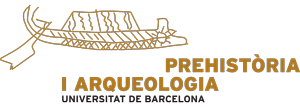11 Desembre 2017
CERAC. Seminari I. Ongoing research on Bronze Age Pottery in Central Asia.
 A càrrec de la Dra. Élise Luneau German Archaeological Institute - Eurasia Department, Berlín.
A càrrec de la Dra. Élise Luneau German Archaeological Institute - Eurasia Department, Berlín.
Dimecres 13 de desembre 15-16h Seminari de la Secció de Prehistòria i Arqueologia. Accés lliure.
Organitza: Dr. Verònica Martínez Ferreras. Equip de Recerca Arqueològica i Arqueomètrica de la Universitat de Barcelona (ERAAUB), en el marc del projecte: CERAC. Las sociedades antiguas complejas de Asia Central a través de la cerámica. Entre la tradición nómada y las influencias mediterráneas (HAR2016-75133-C3-1-P, MINECO)
In the Bronze Age, Central Asia is occupied by different cultural groups. The Oxus civilization or Bactrian Margiana Archaeological Complex (ca. 2300-1400 BCE) figures among the proto-state, highly developed and socially complex sedentary cultures of the Bronze Age Near East. Its territory extends from north-eastern Iran to the southern parts of Uzbekistan and Tajikistan. Mobile populations are also known in whole Central Asia and related to the Andronovo Cultural Community (ca. 2000-1200 BCE). Contrary to what is commonly perceived Bronze Age pottery related to both cultural entities is quite diverse in raw material, processes of fabrication and decorative patterns. The current research aims at characterizing the pottery complexes and reconstructing the main technological choices (chronologically and spatially), thanks to an integrated interdisciplinary approach (taxonomy, technology, chemical analyses, petrography, and experimentation). The combination of different kinds of ceramic studies would highlight the complexity of the pottery production, the evolution, as well as the circulation and transfers of styles, practices and objects between the diverse human groups in whole central Asia. The ongoing research will enable better insights on the significance of local variability, on the definition of the practices at different scales and the networks of exchanges.




